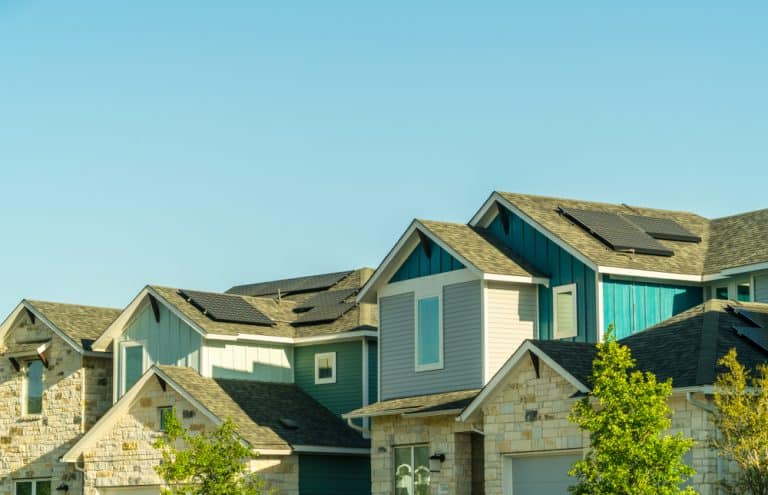ERCOT’s Energy Emergency Alert and Solar

The Electric Reliability Council of Texas (ERCOT) knew that the summer of 2019 would be hot. They, however, weren’t prepared for the August heat.
On Aug. 13, 2019, ERCOT issued a level 1 energy emergency alert. It then continued a couple of days later. Across the state, there were sporadic outages, and ERCOT couldn’t seem to keep it under control.
Not having dependable power is distressing for Texans. It means they can’t count on their house being cool and their refrigerated or frozen food staying eatable.
However, what is more distressing, is the jobs that are dependent on consistent power. Without power, employees can’t do their jobs, which cuts into profits and paychecks.
Electricity Emergency Alert Levels
When ERCOT sends out an alert, they aren’t messing around. With over 25 million customers, they only call an emergency when it is necessary.
There are three levels of electricity emergency alerts (EEA). Each of these alerts is a sign that the grid can’t keep up with the demand.
Although each alert does mean that customers should conserve energy, Some are more severe than others.
Taking a Look at Level 1 EEA
A level 1 alert means that operating reserves have dipped below 2,300 megawatts (MW). The recovery time for these reverses will most likely be over half an hour.
In response to this emergency level, ERCOT can call on all available energy resources for help. Some of these resources include calling on other electric grids.
What a Level 2 EEA Looks Like
Level 2 alerts get issued when reserves are below 1,750 MW. During this alert, reserves are also not expected to come back online for over half an hour. In response, large industrial customers, that have agreed to it, have their power shut off, helping alleviate the load on the grid.
Level 3 EEA: Lights Out!
During a level 3 alert reserves are below 1,375 MW. It is also expected to take longer than half an hour for the reserves to come back online.
If the reserves go below 1,000 mega-watts, transmission companies take turns turning off their customer’s power. This power is then rerouted to help alleviate the strain on the grid.
Rotating power outages means every couple of hours residents can plan on not having power for essentials. Not a fun experience, but better than an unplanned interruption.
ERCOT Peak Hours and Emergency Alerts
Emergency alerts happen when the grid has too much strain. This strain is often during peak hours.
Peak hours are the hours when more electricity gets pulled off the grid. Often, this is in the evenings because that is when most people are home.
When an emergency alert is in effect, ERCOT asks people in the area to conserve their energy use. Especially during times of the day where energy use is high.
Conserving energy means turning down air conditioners in the middle of the blistering summer. It also means using high-energy appliances, such as washing machines and dishwashers, less often and during off-peak hours. Limiting energy use is hard to do, especially when no one is home during off-peak hours to do these household chores.
Energy Emergencies Mitigated with Residential Solar
One way to help solve this problem is with residential solar. Utility companies already have large amounts of power available to them.
However, it still isn’t enough to create grid continuity.
Alternative power is great. However, each of these renewable energy sources requires a lot of space and investment.
The obvious solution is to implement unused space creatively. That is where residential solar comes into play. Unlike the other energy sources on the market, solar arrays can be on a roof, which is a space that could use a duel purpose.
Alleviate the Grid Load With Solar
When a homeowner has solar on their roof, they often overproduce during the day, which compensates energy pulled off the grid. The system would alleviate the strain on the grid during the day.
The issue is that solar arrays, on their own, don’t store this extra energy for later, which forces them to pull power off the grid in the evening. However, this doesn’t need to be the case.
When combined with solar battery backup, excess electricity can be stored. Homes with battery backup relieves the strain on the grid at all times.
Homes with battery backup also have an added benefit. They can stay on when the power goes out.
Use Solar During an Outage
Advertisements for solar arrays showcase solar panels as an emergency preparedness tool. However, without battery backup, this isn’t the case.
Solar panels only generate electricity when the sun is out. Another reason is that solar can’t run while the grid is down, because line workers are trying to fix the grid.
It is illegal for a solar array, connected to the grid, to be on during an outage, which is why it is a requirement for all solar arrays to have automatic shut off switches. However, with battery backup, this is a different story. Battery backup doesn’t connect to the grid; it can power your home when the grid is down.
Not every solar company offers battery backup, let alone battery backup options. Battery backup, however, is Go Solar Group’s forte. As a battery backup expert, they have options for every homeowner’s energy needs.



Send a Message
Oops! We could not locate your form.